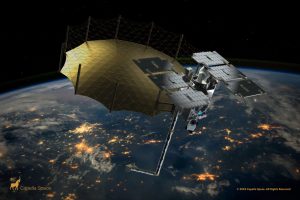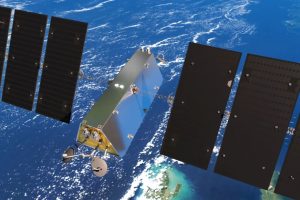They will collaborate on different approaches that could benefit future ispace lunar lander and rover missions.
For example, they will be investigating, the use of radioisotope heater units to provide enough heat for a spacecraft through a lunar night, which has the duration of two weeks on Earth. This will be for the company’s Series 3 lander and rovers.
The first phase of their work was on understanding iSPace’s power needs and mission priorities. Now, in Phase 2, they will be carrying out laboratory and concept studies to test their feasibility.
Lunar night
The university highlights the harsh conditions on the lunar surface, with temperatures falling to minus 170 degrees Celsius during the long nights. Long-term lunar missions, of course, will be required to survive the cryogenic environment.
“The radioisotope power technology that has been developed at the University of Leicester, in conjunction with National Nuclear Laboratory, is performing extremely well in our ongoing testing campaigns,” said Dr. Hannah Sargeant, Project lead from the University of Leicester School of Physics and Astronomy and Space Park Leicester.
“In this project, we will be working with ispace to investigate the feasibility of using radioisotope heater units to provide sufficient heat to spacecraft to endure the lunar night.”
Nuclear power
The Space Nuclear Power group at the University of Leicester has been developing radioisotope power systems for over a decade, it explains.
“These power systems use the heat generated from the decay of radioisotopes, and can be used to provide heat to spacecraft, or converted to electricity to power key subsystems. The technology development has been funded by the European Space Agency (ESA) European Devices Using Radioisotope Energy (ENDURE) program, which has been heavily supported by the UK Space Agency.”
Pictured above are (from left) Dr Hannah Sargeant, Space Park Leicester/University of Leicester, Ramy Mesalam, Space Park Leicester/University of Leicester, Sam Richards, ispace/Meridian Space Command, Yoshiaki Nakaue, ispace, Atsushi Saiki, ispace.
International Bilateral Fund
The University of Leicester team will be working on the lunar night technology with the ispace EUROPE S.A. subsidiary.
The University was awarded funding – £800,000, we reported – under Phase I and Phase II of the UK International Bilateral Fund.
The project outline was to identify a range of mission opportunities for UK space nuclear power technologies. The collaboration also includes the development of hybrid power systems with existing US conversion technologies.
Image: Space Park Leicester/University of Leicester
See also: ispace connects with Orbit Fab for refuelling in outer space
 Electronics Weekly Electronics Design & Components Tech News
Electronics Weekly Electronics Design & Components Tech News




